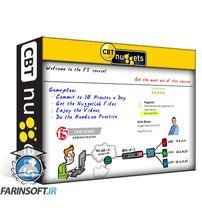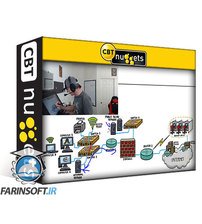در حال حاضر محصولی در سبد خرید شما وجود ندارد.

This entry-level CompTIA Network+ training prepares learners to take the N10-008 exam, which is the one required exam to earn the Network+ certification.
The Network+ certification from CompTIA is one of the most popular IT certifications in the world. The Network+ is so popular because it doesn't cover any one vendor or manufacturer. Instead it focuses on broad concepts that apply to any network or operating system.
در این روش نیاز به افزودن محصول به سبد خرید و تکمیل اطلاعات نیست و شما پس از وارد کردن ایمیل خود و طی کردن مراحل پرداخت لینک های دریافت محصولات را در ایمیل خود دریافت خواهید کرد.
--OSPF-Foundation-Concepts-main-resized.jpg)
آموزش کامل 350-401 ENCOR : یادگیری مفاهیم OSPF

کورس متخصص امنیت شبکه

امنیت سایبری هک کردن کلاه سفید v10

فیلم یادگیری F5 BIG-IP Local Traffic Manager

کار با فایروال های FortiGate 2022

ISC CISSP آموزش آنلاین گواهینامه 2021

Security+ (SY0-601) Online Training
-Assessment-Lab-main-resized.jpg)
دوره تمرین عملی Cisco CCNA (200-301)

آموزش متخصص شدن در امنیت شبکه

CCT Routing & Switching Online Training